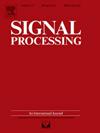Incomplete multi-view semi-supervised classification via dual-graph structure and dual-contrastive completion
IF 3.4
2区 工程技术
Q2 ENGINEERING, ELECTRICAL & ELECTRONIC
引用次数: 0
Abstract
In the real world, data often have multiple views, and learning from these multi-view data can improve the accuracy and robustness of classification models. The success of existing multi-view classification relies on a large amount of labeled and complete multi-view data. However, this is very difficult for practical applications due to data collection techniques failures and expensive labeling costs. To address this challenge, this paper proposes a new incomplete multi-view semi-supervised classification framework. Specifically, we first consider the potential graph structures among samples from specific views and a global view separately, aiming to extract specific information from each view and integrate complementary information across views. Then, we designed a completion module based on view-specific graphs and dual-contrastive learning. This module completes missing views of samples based on the spatial similarity relationships among samples in view-specific graphs, and then enhances the discriminative ability of the completion using dual contrastive learning. Finally, a classifier based on a global-specific graph and graph convolutional network (GCN) is designed to classify unlabeled samples by using spatial relationships among all samples and scarce labels. Extensive experiments, including comparison with existing algorithms, visualization analysis, ablation experiments, and parameter sensitivity examination, are conducted on seven real world datasets to showcase the effectiveness of the proposed framework.
基于双图结构和双对比补全的不完全多视图半监督分类
在现实世界中,数据通常有多个视图,从这些多视图数据中学习可以提高分类模型的准确性和鲁棒性。现有多视图分类的成功依赖于大量标记的、完整的多视图数据。然而,由于数据收集技术的失败和昂贵的标签成本,这在实际应用中非常困难。为了解决这一问题,本文提出了一种新的不完全多视图半监督分类框架。具体而言,我们首先分别考虑特定视图和全局视图样本之间的潜在图结构,旨在从每个视图中提取特定信息,并整合视图间的互补信息。然后,我们设计了一个基于特定视图图和双对比学习的补全模块。该模块基于特定视图图中样本间的空间相似关系完成样本缺失视图,然后利用双对比学习增强补全的判别能力。最后,设计了一种基于全局特定图和图卷积网络(GCN)的分类器,利用所有样本之间的空间关系和稀缺标签对未标记样本进行分类。在7个真实数据集上进行了广泛的实验,包括与现有算法的比较、可视化分析、消融实验和参数灵敏度检验,以展示所提出框架的有效性。
本文章由计算机程序翻译,如有差异,请以英文原文为准。
求助全文
约1分钟内获得全文
求助全文
来源期刊

Signal Processing
工程技术-工程:电子与电气
CiteScore
9.20
自引率
9.10%
发文量
309
审稿时长
41 days
期刊介绍:
Signal Processing incorporates all aspects of the theory and practice of signal processing. It features original research work, tutorial and review articles, and accounts of practical developments. It is intended for a rapid dissemination of knowledge and experience to engineers and scientists working in the research, development or practical application of signal processing.
Subject areas covered by the journal include: Signal Theory; Stochastic Processes; Detection and Estimation; Spectral Analysis; Filtering; Signal Processing Systems; Software Developments; Image Processing; Pattern Recognition; Optical Signal Processing; Digital Signal Processing; Multi-dimensional Signal Processing; Communication Signal Processing; Biomedical Signal Processing; Geophysical and Astrophysical Signal Processing; Earth Resources Signal Processing; Acoustic and Vibration Signal Processing; Data Processing; Remote Sensing; Signal Processing Technology; Radar Signal Processing; Sonar Signal Processing; Industrial Applications; New Applications.
 求助内容:
求助内容: 应助结果提醒方式:
应助结果提醒方式:


